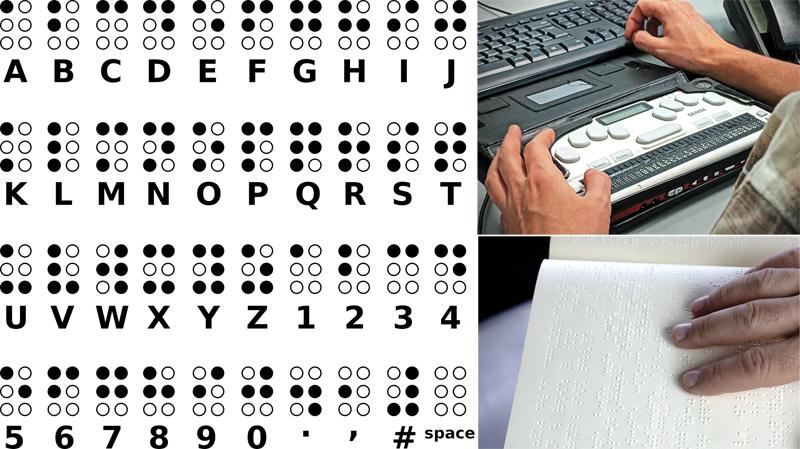
Braille is a writing system for the blind and otherwise visually impaired, making use of raised dots on a page to represent letters, words and punctuation. It is the single most popular tactile writing system in the world and has historically been vital in helping the blind or near blind to enjoy much of the visual information that would otherwise be unavailable to them. However, as well-known as it is, there is a lot about the Braille system that is misunderstood by most people.
 First developed and published in 1829 by Louis Braille, the Braille system of writing was based on an older existing system of tactile writing known as Night Writing. Designed by Charles Barbier in 1815 for the purposes of communicating while in combat at night, it saw no real use by the government. Barbier instead introduced the system to France’s Royal Institute for the Blind, where Braille himself studied.
First developed and published in 1829 by Louis Braille, the Braille system of writing was based on an older existing system of tactile writing known as Night Writing. Designed by Charles Barbier in 1815 for the purposes of communicating while in combat at night, it saw no real use by the government. Barbier instead introduced the system to France’s Royal Institute for the Blind, where Braille himself studied.
Major flaw
While the Night Writing system was adopted by the students at the school, one major flaw of the system became clear. Barbier’s system used a 12 dot cell, 2 columns of 6, for each letter. While this allowed for a wider variety of combinations, it was too large for the human finger to read without moving. This made Night Writing incredibly difficult to read or learn. Louis Braille introduced his own simplified version of Night Writing that instead used a 6 dot cell, 2 columns of 3.
Despite the simplicity and accessibility of his system, Braille continued to be rejected as the official writing system for the blind in favour of the existing Haüy system. The Haüy system, developed by Valentin Haüy, was simply the English alphabet indented onto embossed paper. While the Haüy system allowed many blind people to read and write for decades, it was still very difficult to read. This was one of the major reasons Braille persisted as a tactile writing system over others, as Braille was designed for the fingertips instead of imitating an alphabet designed for visual reading.
Braille would continue to develop his writing system throughout his life, even developing a method transcribing music for the blind, the Braille music system. Despite his efforts, he would not live to see his system be adopted by France as the official form of communication for the blind, passing away at the young age of 43 in 1853. In 1860, Braille reached America and by 1882, the use of Braille was standardised globally.

Now, over a century past, very little has been changed about the system itself. Instead, it has been greatly expanded upon, being adapted to many languages. As Braille is a code for writing and not a language itself, many nations have been able to adopt Braille easily with minor differences. A system for mathematical and scientific notation for Braille was also developed by Abraham Nemeth, called the Nemeth code, allowing more accessibility in teaching those subjects for the blind.
Significant changes
One of the more significant changes was the introduction of contractions, allowing single cell ‘letters’ to represent entire words, like ‘cannot’ and ‘the’. Known now as Grade 2 Braille, the use of contractions allowed for faster reading and smaller Braille books. A further simplified form of Braille, known as Grade 3 Braille, uses even more simplified words and shorthand. However, Grade 3 has had no standardisation so far, so it is not officially recognised.
Ultimately, Braille has been vital in aiding the blind to integrate near perfectly into average sighted society. In America, it’s shown that up to 90 per cent of those who are literate in Braille are employed, as opposed to the 1-in-3 statistic for those who aren’t.
While the average reading speed of Braille is half that of visual print for now, the improvement and literacy of Braille is closing the gap. With more and more integration of Braille into the general public, and further technological developments for Braille, such as Braille computers, Louis Braille’s legacy will allow greater independence for the visually impaired.
